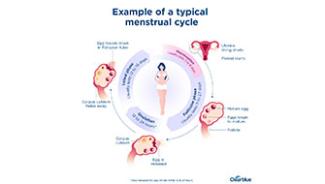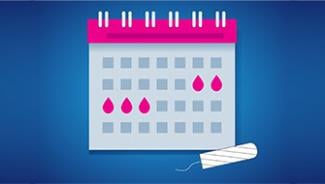What are Kegel exercises?

Also known as pelvic floor exercises1 or pelvic floor muscle training,2 Kegels are exercises you can do anywhere and anytime that help strengthen your pelvic floor muscles.2 And what is your pelvic floor? Made up of muscle fibers and connective tissue, the pelvic floor holds your pelvic organs in place — picture a thin, sheet-like hammock.3 For women, these organs include the bladder, urethra, intestines, rectum, uterus, cervix and vagina.4
While you may have heard the term “Kegels” from your girlfriends or your gynecologist, you may not realize how many benefits regular Kegeling could provide. Are Kegels right for you? And how exactly do you do one? We’ve got answers to your pressing Kegel questions.
Are you a good candidate for “Kegeling”?
Talk to your healthcare provider and discuss whether Kegels could be right for you. People who may benefit from Kegel exercises include those who want to maintain good overall pelvic floor health,1 reduce symptoms of incontinence5 or strengthen a weak pelvic floor.1
That said, Kegeling is not a good option for everyone.1 Some pelvic floor disorders are caused by an overactive pelvic floor that’s too tense, in which case Kegeling could make matters worse.1
What are the benefits of Kegel exercises?
- Better bladder and bowel control5: Do you pee a little when you laugh, sneeze or cough — aka stress incontinence?5 Do you suddenly feel as if you have to pee right now, before peeing a lot? Healthcare professionals refer to this as urinary urge incontinence.5 Do you sometimes leak a little bit of poop? This is called fecal incontinence.5 In all three cases, talk to your healthcare provider — Kegels may help.
- Strengthen weakened pelvic floor muscles6: Being pregnant, having a baby, obesity, surgery around the pelvic area, aging, constipation, frequent coughing and certain exercises can contribute to a weak pelvic floor.6 (By the way, if your healthcare provider diagnoses you with pelvic floor disorder, know that you’re not alone! In a 2022 Scientific Reports study of more than 25,000 women, 32% had been diagnosed with pelvic floor disorder.7)
- Better sex8: According to The Menopause Society, Kegels can increase “strength and awareness of the muscles involved in pleasurable sexual sensations, which can help some women achieve orgasm.”8 Kegels can also reduce vaginal and pelvic pain during sex.8
- Prepare your body for childbirth6: Kegels may make pushing during vaginal delivery easier and support perineal healing after you have the baby.6 Doing Kegel exercises during pregnancy may also help with bladder control and supporting the weight of the fetus.6
What are the benefits of Kegel exercises for men?
Kegeling isn’t just for women!1,6 Al Roker, weather and feature anchor of NBC News’s “TODAY,” helped bring awareness to the benefits of Kegel exercises for men when he said on air that he was Kegeling after receiving surgery for prostate cancer in 2020.9
Kegels may help men improve issues related to incontinence and may also reduce prostate pain associated with conditions such as prostatitis.6 Kegels may also improve a man’s sex life by helping with erections and ejaculation.6
How do you do Kegel exercises?
The first step in doing Kegel exercises is to find your pelvic floor muscles. For both women and men, the next time you have to pee, try to stop midstream. Did you feel some muscles contract? Those are your pelvic floor muscles!1 You can also identify your pelvic floor muscles by squeezing the muscles you would use to stop yourself from passing gas.2
For women, the Mayo Clinic and the Urology Care Foundation suggest that you picture yourself sitting on a marble and then lifting that marble by tightening your pelvic muscles around it.2,5 The Urology Care Foundation also says you can learn where your pelvic floor muscles are by putting your finger inside your vagina and then tensing your muscles as if you are trying to stop pee midstream — the muscles tightening around your finger are your pelvic floor muscles.2 If, after trying these exercises, you’re still having trouble identifying your pelvic floor muscles, talk to your healthcare provider.
Once you’ve located your pelvic floor muscles, it’s time to Kegel! Cleveland Clinic suggests tightening your pelvic floor muscles for three seconds and then releasing for three seconds — this is considered one Kegel.6 Similarly, the National Association for Continence (NAFC) suggests tightening and releasing for five seconds for each Kegel, and then building up to 10 seconds.1 Imagine your pelvic floor as a claw vending machine; the motions the claw makes when picking up a toy mimic a Kegel.6

Ten Kegels equal one set.1,6 Both the NAFC and Cleveland Clinic recommend doing two to three sets per day.1,6
Try not to hold your breath or clench the wrong muscles, including the ones in your abdomen, thighs or butt.1 There should be no pain or discomfort while Kegeling.6
Need some extra guidance on Kegels? In addition to talking with your healthcare provider, these resources and tools may help:
- Kegels can be done lying down, sitting down or standing up — Urology Care Foundation offers a sample exercise schedule for each of these positions.
- Check out Michelle Kenway’s Physiotherapy YouTube channel for lots of pelvic floor exercises videos for women, men and pregnancy.
- To help you keep track of your progress, download this Pelvic Floor Exercise Tracker created by the NAFC.
These days, many resources exist for those who’d like to try Kegeling. If you have any questions about Kegel exercises and if you could benefit from them, talk to your healthcare professional.
Related Articles
Sources
- National Association for Continence. What are Kegel exercises? Accessed September 8, 2023. https://nafc.org/kegel-exercises
- Urology Care Foundation. Kegel and pelvic floor exercise. Updated April 1, 2019. Accessed September 8, 2023. https://www.urologyhealth.org/healthy-living/care-blog/2019/kegel-and- pelvic-floor-exercises
- International Urogynecological Association. Pelvic floor exercises. Accessed September 8, 2023. https://www.yourpelvicfloor.org/conditions/pelvic-floor-exercises/
- Eunice Kennedy Shriver National Institute of Child Health and Human Development, National Institutes of Health. About pelvic floor disorders (PFDs). Updated January 8, 2020. Accessed September 8, 2023. https://www.nichd.nih.gov/health/topics/pelvicfloor/conditioninfo
- Mayo Clinic. Kegel exercises: a how-to guide for women. Updated December 6, 2022. Accessed September 8, 2023. https://www.mayoclinic.org/healthy-lifestyle/womens-health/in- depth/kegel-exercises/art-20045283
- Cleveland Clinic. Kegel exercises. Updated February 1, 2023. Accessed September 8, 2023. https://my.clevelandclinic.org/health/articles/14611-kegel-exercises
- Kenne KA, Wendt L, Brooks Jackson J. Prevalence of pelvic floor disorders in adult women being seen in a primary care setting and associated risk factors. Sci Rep. 2022;12;9878. Doi: 10.1038/s41598-022-13501-w. Accessed September 8, 2023. https://www.nature.com/articles/s41598-022-13501-w
- The Menopause Society. For better sex: 3 ways to strengthen your pelvic floor. Accessed September 8, 2023. https://www.menopause.org/for-women/menopauseflashes/sexual- health/for-better-sex-3-ways-to-strengthen-your-pelvic-floor
- Romano N, Entertainment Weekly. Al Roker returns to Today after prostate cancer surgery: ‘I feel good. I really do.’ Accessed September 8, 2023. https://ew.com/tv/al-roker-today-show- return-prostate-cancer-surgery/

How long is a menstrual cycle?
Most women believe the average menstrual cycle is 28 days long, but cycles can range from 23 to 35 days. Read on to learn more about periods and fertility.

All you need to know about your period
Even if you get your period every month, how much do you really know about periods?




